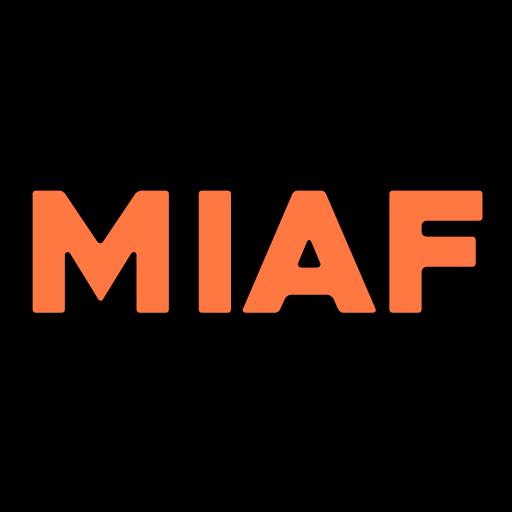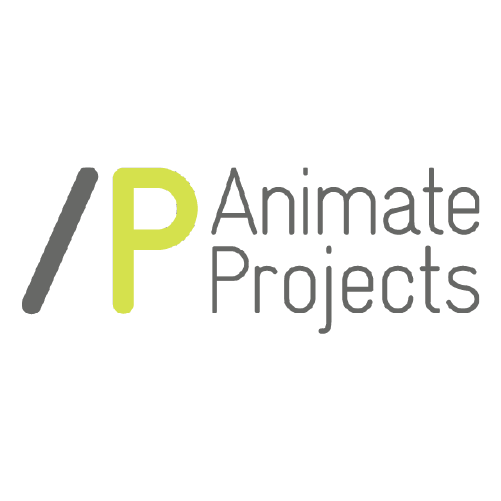Hotel Awesome, Lasagne With A 100% Chance Of Meatballs & No Place Like Home
 LIAF Co-Director Malcolm Turner on his visit to Quickdraw Animation Society, which morphed into two incredible programmes celebrating 30 years: QAS 30th Anniversary: Impact and QAS 30th Anniversary: Retrospective
LIAF Co-Director Malcolm Turner on his visit to Quickdraw Animation Society, which morphed into two incredible programmes celebrating 30 years: QAS 30th Anniversary: Impact and QAS 30th Anniversary: Retrospective
Dateline, Calgary, September 14th, 2013. Walking through the door of the Quickdraw Animation Society – for me – feels like coming home. Given that I have never been here before, that says a lot about what QAS stands for and the kind of place it is.
Unassuming would be one way to describe the building at 351 11th Ave SW. The stairs up to the QAS office feel more like an emergency exit than the way in and there is a “Back In 1 Hour” sign taped to the door that looks like it has been there a few weeks (and was still there several days later when I wrapped up my QAS Treasure Hunt). But I walk through the door and enter another world – one I recognise immediately and feel utterly at home in.
In this world are the million little signs and symbols of three decades of creative discovery and the remnant energies of films that have somehow navigated the twisting path from inspired thought to completed film. This space radiates simple, unwavering passion. Every pore of this place, every faded pinned up sketch, every left behind box of bits and bobs speaks on behalf of the thousands of people who have conquered that path for the singular joy of achieving their own personal creative vision.
As much as almost any place in the world that I have been, QAS stands tenaciously and single-mindedly for the notion that animation is an artform. That animation should be thought of as art, should be practised as an art and taught as an art. This synchronises perfectly with LIAF’s core message and in those first, few, invigorating moments that I stand in the middle of the QAS production room and try to take it all in, I have the strongest sense of having come to a place that speaks the exact same language I do. There are no mysteries here, no need for explanations, just a simple understanding of what is most important.
QAS has been part of my animation landscape from the very beginning. I have a vivid memory of seeing Richard Reeves film Linear Dreams at the Vancouver Film Festival in 1997, three years before the first LIAF. It was a re-energising reminder that I had to keep working at the notion of establishing an animation festival and it stood as an inspiring example of the heights that animation can soar to as an artform. The less than stellar quality VHS tape of it that I brought home as a souvenir was, none the less, one of my most powerful tools in explaining what kind of films a yet-to-be-established LIAF would screen. I wore that tape out showing it to potential funders, sponsors, venues and collaborators.
The QAS welcome was extraordinary. Brian Batista organised an entire floor of his house (temporarily renamed “Hotel Awesome”) for me to use and took me to the airport for a 6am flight! Carol Beecher picked me up late at night after a 30 hour grinder of a flight and devoted the entire time to making sure I had access to everything I needed. Watching her reaction to decades old memories I pulled off shelves was a history lesson in itself. Kevin D.A. Kurytnik is a walking encyclopaedia of films, courses, students and animators that have been part of the QAS salad over the years. And if I had stayed much longer, Laura Leif would just about have wound up being the sister I never had. Over a long dinner (featuring Carol’s signature Meatball Lasagne), the QAS story began to come together for me.
QAS began life as an animation appreciation society. By day Greg Lucier, Rita Egizii and John Edstrom were medical researchers and academics, but by night they harboured a desire to see the kind of creative animation that was coming out of organisations such as the National Film Board of Canada. To scratch this itch they started informal screening nights to show the animation they loved most. In 1984 this little under- ground movement was officially incorporated as the Quickdraw Animation Society.
Word began to get around and the newly incorporated QAS started attracting larger numbers of animators, in particular those studying at the Alberta College Of Art. As time progressed, these ‘homeless’ animators saw in QAS an opportunity to build an organisation that would help support them to make films in an otherwise animatedly isolated Calgary. By 1987 this evolving desire to use QAS as a vehicle to make animation rather than simply watch it, saw a changing of the guard. QAS had morphed into the animation engine room that has become its recognisable raison d’etre ever since.
Enter, stage left, chicken and egg Kevin D.A. Kurytnik and Carol Beecher. In the early 1990’s, after taking a course himself, Kurtynik started teaching animation at the fledgling QAS and, in doing so, more or less singlehandedly established the Quickdraw Animation Society as a uniquely powerful place for people from all walks and with wildly varying experience and abilities, to learn how to animate. Kurytnik’s contribution is impossible to overstate. It essentially provided a kind of perpetual energy that would keep the creative furnace at the heart of QAS going.
All of this provoked a real need for more and better equipment. After all, an organisation with these dreams, this amount of energy and a self created mandate to make more and better animation, could only realise so many of those aspirations with a “bolex strapped to a sewer pipe over a table” (according to the article ‘Strip Malls, Hookers And Dead People’ by OIAF Director, Chris Robinson).
By now Carol Beecher had joined QAS and, together with QAS’s first ever paid employee Mandy Johnston, spearheaded a prolonged period of securing grants and acquiring more professional equipment.
On top of that, the organisation was able to relocate to a larger (although never large enough) space in heart of downtown Calgary. In conversation about this particular period, Beecher, probably unconsciously, charts a younger version of herself that was generating a growing savvy shrewdness about the politics and mechanics of arts funding procurement.

The people and the potential are the two things that Richard Reeves, one of the most successful and best known QAS animators, nominates as the most important things about the organisation.
“QAS has created a community and connected all sorts of people to their inner self as well as to each other”, he says. “The people who run QAS change periodically and I feel this is necessary to expand its own life experiences. In that sense, QAS metamorphosises at times to keep itself animated.”
Gavin De Lint produced a pretty quirky hand drawn short in 1995 called The Tale Of The Steamin’ Green Log. The style and energy of this film differs from many produced at QAS at that time but his recollection of the defining quality of QAS is the same.
“There was a good sense of community there that I didn’t realise until just now that I miss”, he recalls. “Members were always willing to help each other out. There were some really sweet characters there.”
“Talking to other great animators like Richard Reeves was really inspiring”, recalls Brandon Blommaert – who was one of the earliest animators in the QAS family to experiment with blending stopmotion and computer animation in the early 2000s.
Malcolm Sutherland has carved out a profile as one of the most prolific and successful filmmakers on the international animation festival circuit.
“For me it was as a meeting place for animators and artists – there were always such amazing people hanging out there. It is driven by a love of animation. If it was driven by other motives such as fame and fortune it probably would have gone under long ago.”
Change is up there with death and taxes as one of life’s certainties. Both good and bad? Neither good nor bad? It’s all in the eye of the beholder. But change never obeys the stop signs and usually seems to have an “all areas” access pass. Like an inconvenient friend of an inconsiderate guest, it arrives on the wind uninvited and makes itself at home, usually hogging the most comfortable chair. As the 21st century started settling in for the long haul, priorities and agendas began changing at the Quickdraw Animation Society.
Notions such as making films and running workshops to inspire budding filmmakers towards a life creating animation, found it increasingly difficult to find a dance partner. Specific types of workshops that could more readily tap into social justice funding sources that could, in turn, provide financial lifeblood for an increasingly resource-needy organisation began taking priority. Familiar names that had been synonymous with QAS starting disappearing from the roster. Less and less festivals seem to have a QAS film each year.
Some elements of this evolving agenda worked better than others. But there is a real sense that the pendulum is swinging back to something a little more recognisable as the QAS of old. And it has survived. Some of those missing names are starting to turn up again and with Laura Leif heading up a new generation of QAS staffers there is a distinct sensation of a renewal that respects and builds on the best of the organisation’s history.

In 2005 QAS established its own animation festival, GIRAF or the Giant Incandescent Resonating Animation Festival, which like its parent organisation, is dedicated to celebrating animation as an artform. Their wonderful library, that quiet soul and beating heart of QAS, is receiving more attention and support than it perhaps did a few years ago. And more and more people are walking into QAS as mere humans but walking out as ANIMATORS.
Thirty years is a lot of history. A lot of people who have felt a little QAS sun on their backs have theories about how QAS made it to the big Three-Oh.
“The animators involved with QAS are passionate about what they are doing, and they know the good thing they have created together”, offers Trevor Mahovsky, animator of the iconic, much loved classic Stampede Eats Me Up Inside (1998). “It’s hard to think of another arts organisation that provides as much value in courses, books and research material, archives, and facilities.”
“It’s a public resource for an extremely important medium. It’s a place for people to express themselves in a really unique way. They can tell stories and experiment artistically”, echoes Ian Milne who made a film called The Explorasaurs at QAS in 2011. “That’s why it’s been around for 30 years.”
“I think it has survived this long because of how much people love animation” suggests Kim Anderson who first arrived at QAS in 2001 and in addition to finishing three films there, has run classes and workshops and done a stint as a board member and President. No organisation that relies so heavily on grants, volunteers and an arts industry wage structure can ever really feel completely assured of its future. But QAS feels strong, it feels like an organisation with a vision, multiple achievement missions and a reservoir of willpower to make these things happen. It continues to act as an irresistible magnet for people with passion and it continues to craft an atmosphere that converts that passion into getting good stuff done. It wouldn’t be a crazy bet to suggest there’s another thirty years ahead of them.
Malcolm Turner, LIAF Co-Director
















